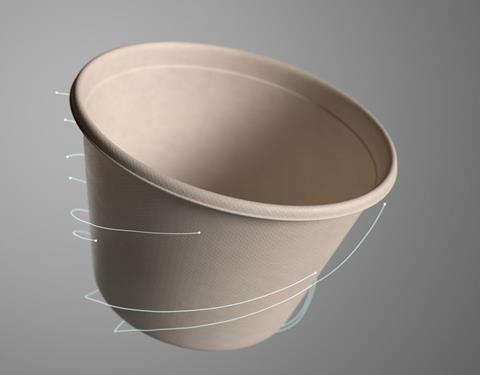Moulded fibre has quickly emerged as the favoured packaging choice for brands pursuing renewable and recyclable alternatives to replace single-use plastics – spanning diverse sectors from food and beverage to electronics, cosmetics, and e-commerce. Within this packaging revolution, chemistry plays a pivotal, but often unseen role. Without it, the creation of functional and safe fibre-based moulded packaging would not be possible.

Moulded fiber packaging is rising in popularity as a packaging choice for brands looking for renewable and recyclable alternatives to replace single-use plastics and materials like expanded polystyrene (EPS), for instance, in food service applications such as bowls, trays, and boxes for takeaway food.
Whenever conventional packaging solutions are replaced with new alternatives, the challenge is to do it without compromising on functionality, safety, or cost-efficiency. Chemistry expertise is the invisible enabler that helps moulded fibre packaging meet these demands.
“In moulded fibre, chemistry is one of the three main variables in the production process along with fibre choice and machine parameters. Chemistry expertise is key in creating the desired properties for the intended packaging end-use and in ensuring efficient production processes, both in terms of cost and raw material efficiency,” explains Simo-Pekka Vanninen, Senior Manager for Application and Marketing at Kemira Pulp & Paper.

Enabling functionality and process efficiency
Chemistry solutions create the required functionality, such as durability, strength, and hydrophobicity for moulded fibre packaging, and ensure hygienic end-products. This is key in creating packages that protect both the goods inside and that are safe for consumers to use. They also have a crucial role in the moulding process, contributing to dewatering and formation performance and efficiency as well as in production line housekeeping, preventing issues with process runnability and operational efficiency.
Kemira has long experience with cellulose-based processes and products from the traditional pulp and paper industry, from pulping to surface treatment, and has also been involved in the moulded fibre industry for years. “With our end-to-end know-how, we can support the emerging and developing moulded fibre applications and help the value chain develop novel high-quality packaging,” says Simo-Pekka Vanninen. “We also have vast knowledge on regulatory compliance and chemical safety topics in-house, which is crucial especially when dealing with food contact materials.”
Safe alternatives for PFAS in food packaging
In moulded fibre packaging, critical barrier properties against oil, grease, moisture, and water have traditionally been achieved by using fluorochemicals (per- and polyfluoroalkyl substances, PFAS). Now PFAS – nicknamed forever chemicals – are drawing increased regulatory attention because of severe concerns about environmental and health hazards.
“Takeaway food packaging is in direct contact with food that we consume, which makes it a priority application for PFAS replacement,” says Sai Li, Senior Research Scientist at Kemira R&D.

Kemira has been working for years with barrier coatings for fibre-based packaging to provide the industry with solutions that enhance recyclability and safety. Now the development focus is on renewable alternatives to fossil-based chemistries and on new solutions that particularly meet the needs of molded fiber production. This entails maintaining performance and cost-efficiency.
“The new solutions we develop must be safe for both people and the environment while being achievable in the packaging value chain,” highlights Sai.
This content was sponsored by Kemira.

















